Dillenburg on:
[Wikipedia]
[Google]
[Amazon]
Dillenburg, officially Oranienstadt Dillenburg, is a town in Hesse's

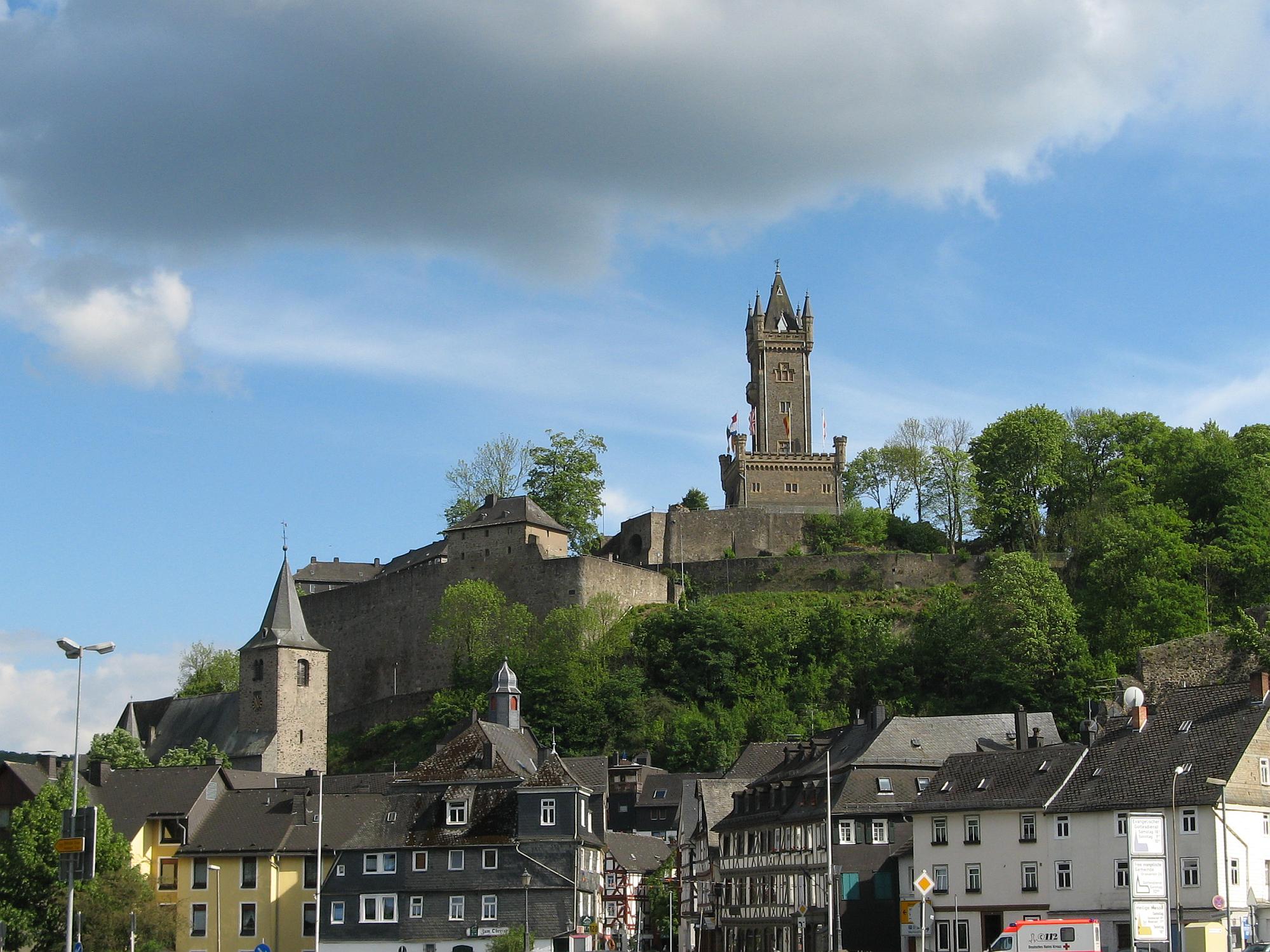
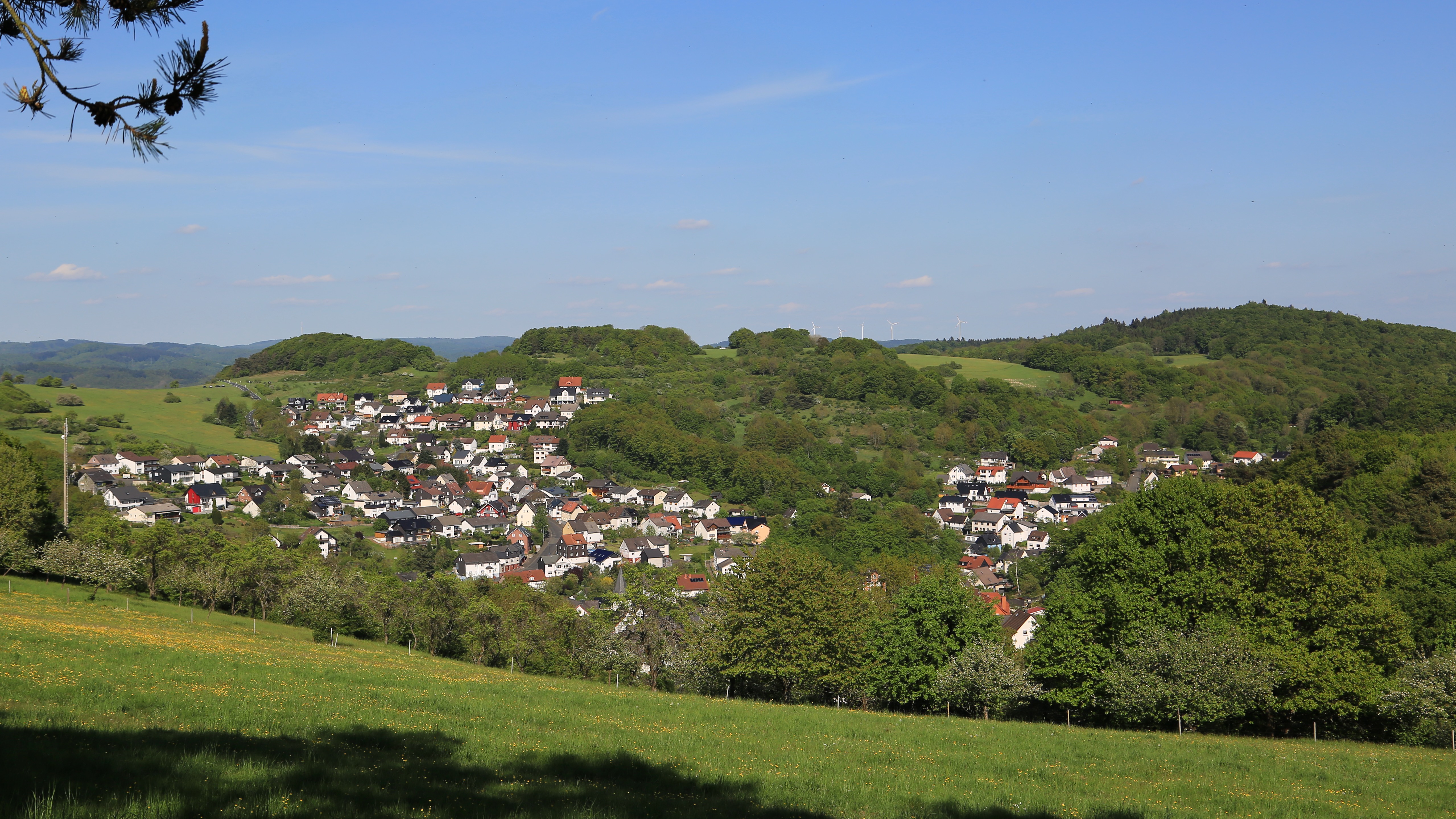
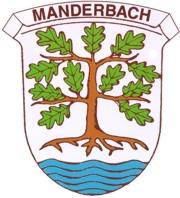 Manderbach had its first documentary mention in 1225, making it older than the main town of Dillenburg (1254). The two former villages – nowadays parts of Dillenburg – Frohnhausen and Manderbach, had much in common in their early history. Here the two noble families von Hunsbach and von Selbach both held sway. As in Frohnhausen, there was also a great fire in Manderbach – albeit 148 years before Frohnhausen's – which, having been started by a
Manderbach had its first documentary mention in 1225, making it older than the main town of Dillenburg (1254). The two former villages – nowadays parts of Dillenburg – Frohnhausen and Manderbach, had much in common in their early history. Here the two noble families von Hunsbach and von Selbach both held sway. As in Frohnhausen, there was also a great fire in Manderbach – albeit 148 years before Frohnhausen's – which, having been started by a

 * ''Wilhelmsturm'' (tower) built in 1872 - 1875
* The "Casemates", old defensive structures.from the 16th century
* The Evangelische Town Church from 1491
* The ''Dillturm'' (tower) from 1597
* The old rectory from 1531–1533
* The ''Untertor'' (Lower Gate) from 1344 (alterations in 1594 and 1737)
* Manderbach Church
* ''Wilhelmsturm'' (tower) built in 1872 - 1875
* The "Casemates", old defensive structures.from the 16th century
* The Evangelische Town Church from 1491
* The ''Dillturm'' (tower) from 1597
* The old rectory from 1531–1533
* The ''Untertor'' (Lower Gate) from 1344 (alterations in 1594 and 1737)
* Manderbach Church
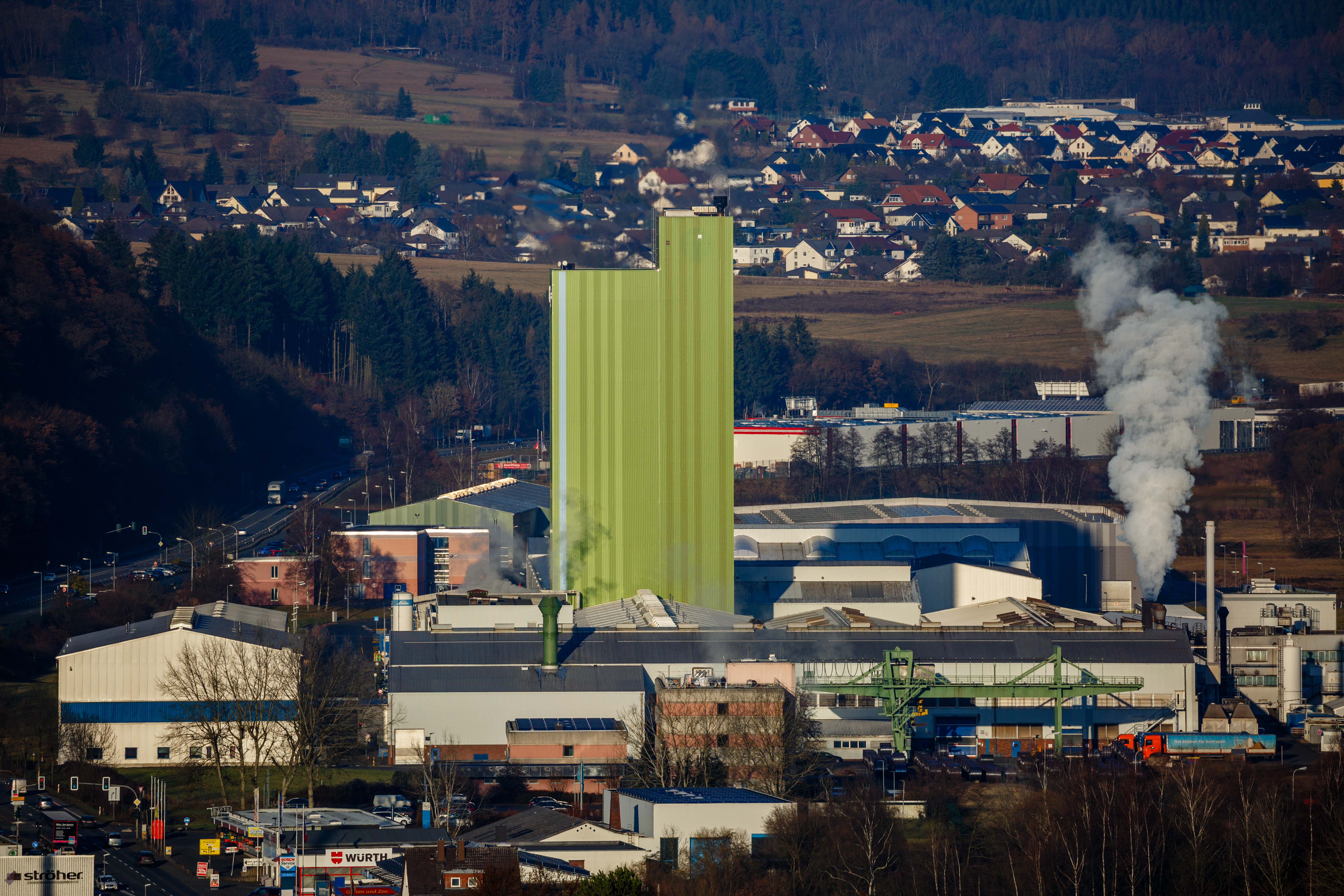
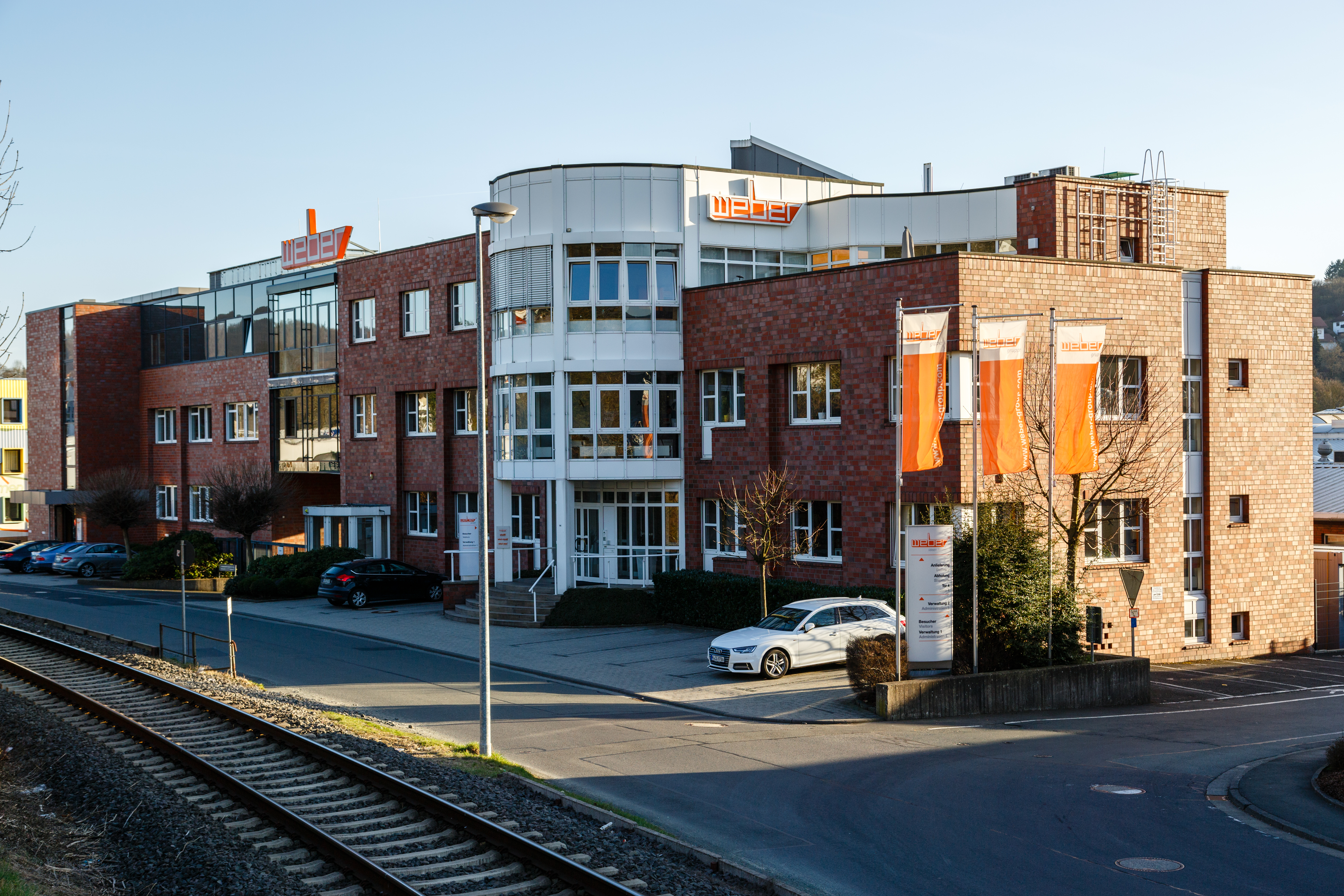 * Deutsche Post AG
* E.ON Mitte (OT Oberscheld)
* Funkenerosionstechnik Hartwig Hermann
* INDEN Design
* Isabellenhütte Heusler GmbH & Co. KG
* Linde & Wiemann
* Ströher-Keramik
* Outokumpu Dillenburg Works
* TSR Recycling GmbH & Co. KG Dillenburg Branch
* Volksbank Dill eG
* Weber Kunststofftechnik
* Deutsche Post AG
* E.ON Mitte (OT Oberscheld)
* Funkenerosionstechnik Hartwig Hermann
* INDEN Design
* Isabellenhütte Heusler GmbH & Co. KG
* Linde & Wiemann
* Ströher-Keramik
* Outokumpu Dillenburg Works
* TSR Recycling GmbH & Co. KG Dillenburg Branch
* Volksbank Dill eG
* Weber Kunststofftechnik
 * Gewerbliche Schulen (
* Gewerbliche Schulen (
 * William I, Count of Nassau-Siegen (1487–1559) count from the House of Nassau, nicknamed ''the Rich''
*
* William I, Count of Nassau-Siegen (1487–1559) count from the House of Nassau, nicknamed ''the Rich''
*
Dillenburg
Website about Dillenburg railway station and railway guide line 445
Dillenburg fire station
Nanzenbach
{{Authority control Lahn-Dill-Kreis History of forestry education Burial sites of the House of Nassau-Siegen People from Dillenburg
Gießen
Giessen, spelled in German (), is a town in the German state () of Hesse, capital of both the district of Giessen and the administrative region of Giessen. The population is approximately 90,000, with roughly 37,000 university students.
Th ...
region in Germany
Germany, officially the Federal Republic of Germany, is a country in Central Europe. It lies between the Baltic Sea and the North Sea to the north and the Alps to the south. Its sixteen States of Germany, constituent states have a total popu ...
. The town was formerly the seat of the old Dillkreis district, which is now part of the Lahn-Dill-Kreis.
The town lies on the German- Dutch holiday road called the Orange Route, joining towns, cities and regions associated with the House of Orange-Nassau
The House of Orange-Nassau (, ), also known as the House of Orange because of the prestige of the princely title of Orange, also referred to as the Fourth House of Orange in comparison with the other noble houses that held the Principality of Or ...
, as well as on the German Timber-Frame Road and the Rothaarsteig hiking
A hike is a long, vigorous walk, usually on trails or footpaths in the countryside. Walking for pleasure developed in Europe during the eighteenth century. Long hikes as part of a religious pilgrimage have existed for a much longer time.
"Hi ...
trail.
Geography
Location
Dillenburg lies on the eastern edge of theWesterwald
The Westerwald (; literally 'Western forest') is a low mountain range on the right bank of the river Rhine in the States of Germany, German federal states of Rhineland-Palatinate, Hesse and North Rhine-Westphalia. It is a part of the Rhenish Ma ...
range in the narrow valley of the river Dill, which flows from Hesse-Westphalia border to Wetzlar
Wetzlar () is a city in the state of Hesse, Germany. It is the twelfth largest city in Hesse with currently 55,371 inhabitants at the beginning of 2019 (including second homes). As an important cultural, industrial and commercial center, the un ...
, emptying into the Lahn
The Lahn () is a , right (or eastern) tributary of the Rhine in Germany. Its course passes through the States of Germany, federal states of North Rhine-Westphalia (23.0 km), Hesse (165.6 km), and Rhineland-Palatinate (57.0 km).
...
. The Dietzhölze flows into the Dill in Dillenburg.



Neighbouring communities
Dillenburg borders in the north on the community of Eschenburg, in the east on the community of Siegbach, in the south on the town of Herborn, and the community of Breitscheid, and in the west on the town of Haiger (all in the Lahn-Dill-Kreis).Constituent communities
Dillenburg is divided into the centres of Donsbach, Eibach, Frohnhausen, Manderbach, Nanzenbach, Niederscheld and Oberscheld.Donsbach
Donsbach lies approximately 4 km southwest of the Dillenburg main town.Eibach
Eibach has some 1,450 inhabitants. The village, whose livelihood was once based onmining
Mining is the Resource extraction, extraction of valuable geological materials and minerals from the surface of the Earth. Mining is required to obtain most materials that cannot be grown through agriculture, agricultural processes, or feasib ...
, lies among the other constituent communities of Nanzenbach, Oberscheld and Niederscheld. Its healing spring, whose water is heavy with iron
Iron is a chemical element; it has symbol Fe () and atomic number 26. It is a metal that belongs to the first transition series and group 8 of the periodic table. It is, by mass, the most common element on Earth, forming much of Earth's o ...
, makes the village a favourite among locals. At Easter
Easter, also called Pascha ( Aramaic: פַּסְחָא , ''paskha''; Greek: πάσχα, ''páskha'') or Resurrection Sunday, is a Christian festival and cultural holiday commemorating the resurrection of Jesus from the dead, described in t ...
time, it is decorated.
Frohnhausen
With roughly 3,900 inhabitants, Frohnhausen is the largest of the constituent communities after the main town of Dillenburg.Manderbach
Manderbach lies on aplateau
In geology and physical geography, a plateau (; ; : plateaus or plateaux), also called a high plain or a tableland, is an area of a highland consisting of flat terrain that is raised sharply above the surrounding area on at least one side. ...
3 km north of the main town of Dillenburg.
Nanzenbach
Nanzenbach lies approximately 6 km north of the main town of Dillenburg. The tallest mountain of Dillenburg, the Eschenburg at an elevation of 589 m, is part of the Nanzenbach area.Niederscheld
Niederscheld is a village with about 3000 inhabitants, lying 2 km from the main town of Dillenburg. The name comes from a small brook called the Schelde that rises between Oberscheld and Tringenstein and flows into the Dill at Niederscheld. The village's greatest hallmarks are the oldblast furnace
A blast furnace is a type of metallurgical furnace used for smelting to produce industrial metals, generally pig iron, but also others such as lead or copper. ''Blast'' refers to the combustion air being supplied above atmospheric pressure.
In a ...
and the Adolfshütte industrial park
An industrial park, also known as industrial estate or trading estate, is an area zoned and planned for the purpose of industrial development. An industrial park can be thought of as a more heavyweight version of a business park or office par ...
. Towards the end of the Second World War
World War II or the Second World War (1 September 1939 – 2 September 1945) was a World war, global conflict between two coalitions: the Allies of World War II, Allies and the Axis powers. World War II by country, Nearly all of the wo ...
, the village suffered comparatively heavy damage from Allied air raids.
Niederscheld had been appointed a target, because parts for the V-2 rocket
The V2 (), with the technical name ''Aggregat (rocket family), Aggregat-4'' (A4), was the world's first long-range missile guidance, guided ballistic missile. The missile, powered by a liquid-propellant rocket engine, was developed during the S ...
were built at the Adolfshütte.
Oberscheld
Oberscheld is a village of about 2,000 inhabitants. It neighbours Niederscheld. Mining was quite important for Oberscheld until the last blast furnace was closed in 1969. Oberscheld had a station, the last train ran in Oberscheld in 1987.History
Dillenburg had its first documentary mention in 1254. Dillenburg was the ancestral seat of the Orange branch of theHouse of Nassau
The House of Nassau is the name of a European aristocratic dynasty. The name originated with a lordship associated with Nassau Castle, which is located in what is now Nassau, Rhineland-Palatinate, Nassau in Rhineland-Palatinate, Germany. With t ...
. Dillenburg Castle was built on top of the peak now called the Schlossberg in the late 13th or early 14th century. There are no pictures of this castle, however, as it was wooden, and was destroyed in the Dernbacher Feud.
From his stately home in exile, William I of Orange-Nassau, who was born in Dillenburg, organized the Dutch resistance against Spain
Spain, or the Kingdom of Spain, is a country in Southern Europe, Southern and Western Europe with territories in North Africa. Featuring the Punta de Tarifa, southernmost point of continental Europe, it is the largest country in Southern Eur ...
(1567–1572), which still occasions regular Dutch royal visits to the town to this day. The land was administered by the presidents of the House of Nassau-Dillenburg. One of the last presidents was Georg Ernst Ludwig Freiherr von Preuschen von und zu Liebenstein (born 1727 in Diethardt; died 1794 in Bad Ems). In the Seven Years' War
The Seven Years' War, 1756 to 1763, was a Great Power conflict fought primarily in Europe, with significant subsidiary campaigns in North America and South Asia. The protagonists were Kingdom of Great Britain, Great Britain and Kingdom of Prus ...
, the stately home was destroyed (1760), and Wilhelmstraße (a street) was built out of the remains.
In 1797, one of the earliest schools of forestry in Europe, founded a decade earlier at Hungen by Georg Ludwig Hartig, was moved to Dillenburg. It continued in Dillenburg until 1805, when Hartig lost his position as Inspector of Forests for the Prince of Orange-Nassau, when the principality was dissolved by Napoleon
Napoleon Bonaparte (born Napoleone di Buonaparte; 15 August 1769 – 5 May 1821), later known by his regnal name Napoleon I, was a French general and statesman who rose to prominence during the French Revolution and led Military career ...
.
In 1875, the Wilhelmsturm (tower), views from which can be seen in this article, was completed on the Schlossberg. It is today the town's landmark. The "casemates" under the former stately home are among the biggest defensive works in Europe
Europe is a continent located entirely in the Northern Hemisphere and mostly in the Eastern Hemisphere. It is bordered by the Arctic Ocean to the north, the Atlantic Ocean to the west, the Mediterranean Sea to the south, and Asia to the east ...
. They have been partly excavated and may be toured.
In the 19th century came the Industrial Revolution
The Industrial Revolution, sometimes divided into the First Industrial Revolution and Second Industrial Revolution, was a transitional period of the global economy toward more widespread, efficient and stable manufacturing processes, succee ...
with the building of the Deutz–Gießen railway and the use of iron ore
Iron ores are rocks and minerals from which metallic iron can be economically extracted. The ores are usually rich in iron oxides and vary in color from dark grey, bright yellow, or deep purple to rusty red. The iron is usually found in the f ...
found on the Lahn, Dill and Sieg. Many mines, foundries and metalworking operations came into being in the region. In this time, many railway branchlines were built from Dillenburg to, among other places, Gönnern and Ewersbach. These lines have all been abandoned now. The line to Gönnern was abandoned in 1987 and torn up. The railway depot, so useful in the time of steam traction, was shut down in 1983.
In the Second World War
World War II or the Second World War (1 September 1939 – 2 September 1945) was a World war, global conflict between two coalitions: the Allies of World War II, Allies and the Axis powers. World War II by country, Nearly all of the wo ...
, Dillenburg became a target of Allied attacks due to its marshalling yard. In later years that yard was closed and ore mining became ever less profitable and in 1968, the last blast furnace, in Oberscheld, ceased operations.
As of November 2017, the town's name was officially extended to "Oranienstadt Dillenburg" to reference Dillenburg's special connection to the House of Orange-Nassau
The House of Orange-Nassau (, ), also known as the House of Orange because of the prestige of the princely title of Orange, also referred to as the Fourth House of Orange in comparison with the other noble houses that held the Principality of Or ...
as its ancestral seat.
Eibach
Eibach's history began in "Nassau times" in the 13th century. In 1313, the village had its first documentary mention. In the Second World War, it was left unscathed. In 2004, the healing spring was renovated, and a brineworks was built.Manderbach
 Manderbach had its first documentary mention in 1225, making it older than the main town of Dillenburg (1254). The two former villages – nowadays parts of Dillenburg – Frohnhausen and Manderbach, had much in common in their early history. Here the two noble families von Hunsbach and von Selbach both held sway. As in Frohnhausen, there was also a great fire in Manderbach – albeit 148 years before Frohnhausen's – which, having been started by a
Manderbach had its first documentary mention in 1225, making it older than the main town of Dillenburg (1254). The two former villages – nowadays parts of Dillenburg – Frohnhausen and Manderbach, had much in common in their early history. Here the two noble families von Hunsbach and von Selbach both held sway. As in Frohnhausen, there was also a great fire in Manderbach – albeit 148 years before Frohnhausen's – which, having been started by a lightning strike
A lightning strike or lightning bolt is a lightning event in which an electric discharge takes place between the atmosphere and the ground. Most originate in a cumulonimbus cloud and terminate on the ground, called cloud-to-ground (CG) lightning ...
, burnt 38 houses down within an hour and a half on 29 April 1630.
Nanzenbach
The name Nanzenbach was mentioned for the first time in a document on 8 May 1325. This document mentions "die Nantzenbecher" — "the inhabitants of Nanzenbach".Population development
(in each case on 31 December) *1998 - 25,053 *1999 - 25,124 *2000 - 25,092 *2001 - 25,017 *2002 - 24,923 *2003 - 24,681 *2004 - 24,533Coat of arms
The oldest town seals, dating from the 15th to 19th centuries, show the same composition as Dillenburg's current civiccoat of arms
A coat of arms is a heraldry, heraldic communication design, visual design on an escutcheon (heraldry), escutcheon (i.e., shield), surcoat, or tabard (the last two being outer garments), originating in Europe. The coat of arms on an escutcheon f ...
. The arms were conferred officially in 1907 and confirmed in 1934. The lion inside the gateway is the Lion of NassauCulture and sightseeing
Museums
* ''Wilhelmsturm'' (tower) with the Orange-Nassau Museum * "Villa Grün" museum of economic history * The "Casemates", old defensive structures. * ''Hessisches Landgestüt'' (≈ Hessian State Stud Farm) with coach museum in the Orangery. "Living Museum" about thehorse
The horse (''Equus ferus caballus'') is a domesticated, one-toed, hoofed mammal. It belongs to the taxonomic family Equidae and is one of two extant subspecies of ''Equus ferus''. The horse has evolved over the past 45 to 55 mi ...
.
Buildings

 * ''Wilhelmsturm'' (tower) built in 1872 - 1875
* The "Casemates", old defensive structures.from the 16th century
* The Evangelische Town Church from 1491
* The ''Dillturm'' (tower) from 1597
* The old rectory from 1531–1533
* The ''Untertor'' (Lower Gate) from 1344 (alterations in 1594 and 1737)
* Manderbach Church
* ''Wilhelmsturm'' (tower) built in 1872 - 1875
* The "Casemates", old defensive structures.from the 16th century
* The Evangelische Town Church from 1491
* The ''Dillturm'' (tower) from 1597
* The old rectory from 1531–1533
* The ''Untertor'' (Lower Gate) from 1344 (alterations in 1594 and 1737)
* Manderbach Church
Parks
In Donsbach is a wildlife park.Hiking trails
The following trails go through or begin in Dillenburg: * The '' Rothaarsteig'' from Dillenburg to Brilon * The ''Schlösserweg'' from Dillenburg to Düsseldorf -Benrath * The ''Dillweg'' from Haiger toWetzlar
Wetzlar () is a city in the state of Hesse, Germany. It is the twelfth largest city in Hesse with currently 55,371 inhabitants at the beginning of 2019 (including second homes). As an important cultural, industrial and commercial center, the un ...
* The ''Uplandweg'' from Dillenburg to Salzkotten
Regular events
* Jazz-Weekend, in June * ''Kirschenmarkt'' (cherry market), in June * Aquarena-Nacht, in July * Hubertus-Markt, in October * Hengstparade des Hessischen Landgestüts (stallion parade) * Maypole Festival in Eibach, at the beginning of May * '' Rocknacht'' music festival in Eibach, in summer.Other
* Brineworks and healing spring, EibachEconomy and infrastructure
Transport
The bypass on Federal Highway (''Bundesstraße'') B277 opened in April 2007. It is atunnel
A tunnel is an underground or undersea passageway. It is dug through surrounding soil, earth or rock, or laid under water, and is usually completely enclosed except for the two portals common at each end, though there may be access and ve ...
under the Schlossberg, bypassing the historic Old Town with its timber-frame houses and it was one of Germany's biggest tunnel projects. As a result of the bankruptcy of the contractor for the works, Walter Bau, completion of the project was delayed by more than a year.
Dillenburg station is on the Dill line, part of the original Cologne-Gießen Railway. It runs from Gießen
Giessen, spelled in German (), is a town in the German state () of Hesse, capital of both the district of Giessen and the administrative region of Giessen. The population is approximately 90,000, with roughly 37,000 university students.
Th ...
to Siegen
Siegen () is a List of cities and towns in Germany, city in Germany, in the south Westphalian part of North Rhine-Westphalia.
It is located in the district of Siegen-Wittgenstein in the Arnsberg (region), Arnsberg region. The university town (n ...
and connects central Hesse with the Rhineland
The Rhineland ( ; ; ; ) is a loosely defined area of Western Germany along the Rhine, chiefly Middle Rhine, its middle section. It is the main industrial heartland of Germany because of its many factories, and it has historic ties to the Holy ...
and the Ruhr
The Ruhr ( ; , also ''Ruhrpott'' ), also referred to as the Ruhr Area, sometimes Ruhr District, Ruhr Region, or Ruhr Valley, is a polycentric urban area in North Rhine-Westphalia, Germany. With a population density of 1,160/km2 and a populati ...
. The Heller Valley Railway, runs from Betzdorf via Burbach to Dillenburg. The Dillenburg station was once a major freight terminal for iron mining in the Schelderwald.
Established businesses

 * Deutsche Post AG
* E.ON Mitte (OT Oberscheld)
* Funkenerosionstechnik Hartwig Hermann
* INDEN Design
* Isabellenhütte Heusler GmbH & Co. KG
* Linde & Wiemann
* Ströher-Keramik
* Outokumpu Dillenburg Works
* TSR Recycling GmbH & Co. KG Dillenburg Branch
* Volksbank Dill eG
* Weber Kunststofftechnik
* Deutsche Post AG
* E.ON Mitte (OT Oberscheld)
* Funkenerosionstechnik Hartwig Hermann
* INDEN Design
* Isabellenhütte Heusler GmbH & Co. KG
* Linde & Wiemann
* Ströher-Keramik
* Outokumpu Dillenburg Works
* TSR Recycling GmbH & Co. KG Dillenburg Branch
* Volksbank Dill eG
* Weber Kunststofftechnik
Media
* Dill-Post * Dill-ZeitungPublic institutions
* Police station * Fire brigade * Dill-Kliniken (hospital
A hospital is a healthcare institution providing patient treatment with specialized Medical Science, health science and auxiliary healthcare staff and medical equipment. The best-known type of hospital is the general hospital, which typically ...
)
* Deaconate
* German Red Cross Dillkreis chapter
* Lahn-Dill Youth Office
* Lahn-Dill ''Jugendbildungswerk''
* ''Lebenshilfe'' for the mentally handicapped ''Kreisvereinigung für den ehem. Dillkreis e.V. '' (District association for the former Dill district)
* Lahn-Dill Social Office
Education
 * Gewerbliche Schulen (
* Gewerbliche Schulen (vocational school
A vocational school (alternatively known as a trade school, or technical school), is a type of educational institution, which, depending on the country, may refer to either secondary education#List of tech ed skills, secondary or post-secondar ...
)
* Goldbachschule (Haupt- and Realschule)
* Juliane-von-Stolberg-Schule (primary school
A primary school (in Ireland, India, the United Kingdom, Australia, New Zealand, Trinidad and Tobago, Jamaica, South Africa, and Singapore), elementary school, or grade school (in North America and the Philippines) is a school for primary ...
)
* Johann-von-Nassau-Schule ( Haupt- and Realschule
Real school (, ) is a type of secondary school in Germany, Switzerland and Liechtenstein. It has also existed in Croatia (''realna gimnazija''), the Austrian Empire, the German Empire, Denmark and Norway (''realskole''), Sweden (''realskola''), F ...
)
* Kaufmännische Schulen (vocational school)
* Kindergartens (Evangelical
Evangelicalism (), also called evangelical Christianity or evangelical Protestantism, is a worldwide, interdenominational movement within Protestantism, Protestant Christianity that emphasizes evangelism, or the preaching and spreading of th ...
, Catholic
The Catholic Church (), also known as the Roman Catholic Church, is the List of Christian denominations by number of members, largest Christian church, with 1.27 to 1.41 billion baptized Catholics Catholic Church by country, worldwid ...
, municipal, ''Arbeiterwohlfahrt'' erman workers' welfare
* Lahn-Dill-Akademie (Folk high school
Folk high schools (also ''adult education center'') are institutions for adult education that generally do not grant academic degrees, though certain courses might exist leading to that goal. They are most commonly found in Nordic countries and i ...
)
* Otfried-Preußler-Schule für Praktisch Bildbare (special school
Special education (also known as special-needs education, aided education, alternative provision, exceptional student education, special ed., SDC, and SPED) is the practice of educating students in a way that accommodates their individual d ...
)
* Roteberg-Schule (primary school)
* Schelderwald-Schule (primary school and Hauptschule)
* Wilhelm-von-Oranien-Schule ( Gymnasium)
Twin towns – sister cities
Dillenburg is twinned with: *Breda
Breda ( , , , ) is a List of cities in the Netherlands by province, city and List of municipalities of the Netherlands, municipality in the southern part of the Netherlands, located in the Provinces of the Netherlands, province of North Brabant. ...
, Netherlands
* Diest, Belgium
* Hereford
Hereford ( ) is a cathedral city and the county town of the ceremonial county of Herefordshire, England. It is on the banks of the River Wye and lies east of the border with Wales, north-west of Gloucester and south-west of Worcester. With ...
, England, United Kingdom
* Orange, France
Notable people
 * William I, Count of Nassau-Siegen (1487–1559) count from the House of Nassau, nicknamed ''the Rich''
*
* William I, Count of Nassau-Siegen (1487–1559) count from the House of Nassau, nicknamed ''the Rich''
*William the Silent
William the Silent or William the Taciturn (; 24 April 153310 July 1584), more commonly known in the Netherlands as William of Orange (), was the leader of the Dutch revolt against the Spanish Habsburg Netherlands, Habsburgs that set off the ...
(1533–1584), leader in the Dutch war of independence against Spain.
* John VI, Count of Nassau-Dillenburg (1536–1606), aristocrat.
*Maurice, Prince of Orange
Maurice of Orange (; 14 November 1567 – 23 April 1625) was ''stadtholder'' of all the provinces of the Dutch Republic except for Lordship of Frisia, Friesland from 1585 at the earliest until his death on 23 April 1625. Before he became P ...
(1567–1625), aristocrat.
* Ernest Casimir I, Count of Nassau-Dietz (1573–1632), ancestor of Kings of the Netherlands
, Terminology of the Low Countries, informally Holland, is a country in Northwestern Europe, with Caribbean Netherlands, overseas territories in the Caribbean. It is the largest of the four constituent countries of the Kingdom of the Nether ...
* John Maurice, Prince of Nassau-Siegen (1604–1679), Dutch field marshal, called the ''Brazilian''.
* Karl Christian Kehrer (1755-1833) portrait, landscape and history painter.
* John O. Meusebach (1812–1897), founder of Fredericksburg, Texas
Fredericksburg () is a city in and the county seat of Gillespie County, Texas, United States. As of the 2020 United States census, 2020 Census, this city had a population of 10,875.
Fredericksburg was founded in 1846 and named after Prince Frede ...
and Texas Senator
* Julius Eckhardt Raht (1826–1879), American mining engineer and entrepreneur
* Arnold Lequis (1861-1949) General of the Infantry (Germany)
General of the Infantry (, abbr. ) is a former rank of the German army (). It is currently an appointment or position given to an OF-8, OF-8 rank officer, who is responsible for particular affairs of training and equipment of the infantry.
F ...
in WWI
* Fritz Angerstein (1891–1925), mass murderer
* Maria Kliegel, (born 1952), cellist
* Deborah Levi (born 1997) bobsledder, gold medallist in the 2022 Winter Olympics
The 2022 Winter Olympics, officially called the XXIV Olympic Winter Games () and commonly known as Beijing 2022 (2022), were an international winter multi-sport event held from 4 to 20 February 2022 in Beijing, China, and surrounding areas wit ...
Worked in Dillenburg
* Maximilian Mörlin (1516–1584), Evangelical theologian and reformer * Catharina Helena Dörrien (1717–1795), worked in Dillenburg from 1746 and lived here until she died in 1795. Whilst resident, she produced a various publications, including a catalogue of the flora of Orange-Nassau, where she became the first woman to name afungal
A fungus (: fungi , , , or ; or funguses) is any member of the group of eukaryotic organisms that includes microorganisms such as yeasts and molds, as well as the more familiar mushrooms. These organisms are classified as one of the tradit ...
taxon
* Georg Ludwig Hartig (1764–1837) worked from 1797 to 1805 as Inspector of Forests for the Prince of Orange-Nassau, in Dillenburg; at the same time led one of the earliest schools of forestry in Europe, also in Dillenburg
* Bruno Gröning (1906–1959), mystic and healer, had his practise in Dillenburg for a period and is buried there
References
External links
Dillenburg
Website about Dillenburg railway station and railway guide line 445
Dillenburg fire station
Nanzenbach
{{Authority control Lahn-Dill-Kreis History of forestry education Burial sites of the House of Nassau-Siegen People from Dillenburg